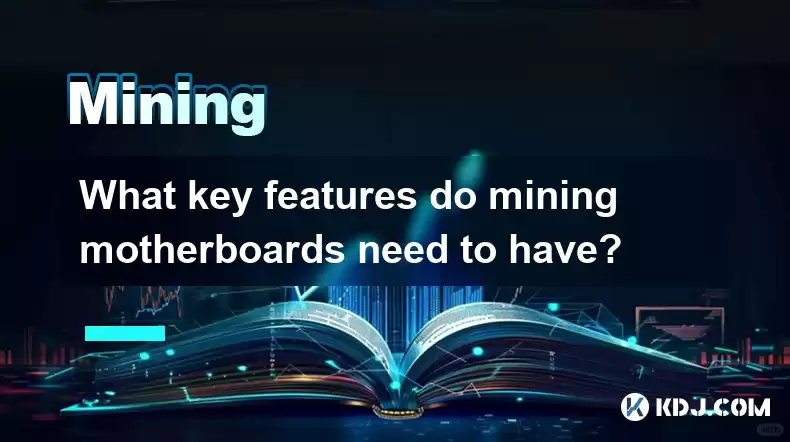-
 Bitcoin
Bitcoin $116800
1.37% -
 Ethereum
Ethereum $3832
5.15% -
 XRP
XRP $3.063
2.69% -
 Tether USDt
Tether USDt $1.000
0.04% -
 BNB
BNB $774.1
0.84% -
 Solana
Solana $170.7
1.56% -
 USDC
USDC $0.0000
0.01% -
 Dogecoin
Dogecoin $0.2142
5.31% -
 TRON
TRON $0.3406
1.90% -
 Cardano
Cardano $0.7635
3.81% -
 Hyperliquid
Hyperliquid $39.55
2.42% -
 Sui
Sui $3.732
7.71% -
 Stellar
Stellar $0.4127
4.25% -
 Chainlink
Chainlink $17.80
6.91% -
 Bitcoin Cash
Bitcoin Cash $576.7
1.66% -
 Hedera
Hedera $0.2521
3.28% -
 Ethena USDe
Ethena USDe $1.001
0.01% -
 Avalanche
Avalanche $22.66
2.19% -
 Litecoin
Litecoin $121.3
2.98% -
 UNUS SED LEO
UNUS SED LEO $8.959
-0.31% -
 Toncoin
Toncoin $3.325
2.88% -
 Shiba Inu
Shiba Inu $0.00001263
2.84% -
 Uniswap
Uniswap $10.11
4.79% -
 Polkadot
Polkadot $3.769
3.22% -
 Dai
Dai $1.000
0.01% -
 Bitget Token
Bitget Token $4.413
1.46% -
 Monero
Monero $272.9
-4.98% -
 Cronos
Cronos $0.1488
4.22% -
 Pepe
Pepe $0.00001088
4.01% -
 Aave
Aave $273.0
4.73%
What key features do mining motherboards need to have?
Cryptocurrency mining motherboards need robust power delivery, multiple high-speed PCIe lanes (4.0/5.0), effective cooling, a mining-friendly BIOS, and compatibility with mining software for optimal hash rate and longevity.
Mar 21, 2025 at 07:42 pm

Key Points:
- High-speed PCIe lanes: Essential for connecting multiple GPUs, crucial for efficient mining.
- Robust power delivery: Mining demands substantial power; a sturdy power system is non-negotiable.
- Multiple GPU slots: The number of slots directly impacts the mining hash rate. More slots, more potential earnings.
- Effective cooling solutions: Overheating is a major threat to mining hardware. Efficient cooling prevents damage and maintains performance.
- BIOS support for mining: Specific BIOS settings optimize performance for mining algorithms.
- Compatibility with mining software: Seamless integration with mining software is critical for smooth operation.
- Expandability: Future-proofing your setup involves choosing a motherboard with sufficient expansion capabilities.
What key features do mining motherboards need to have? The demands of cryptocurrency mining place unique requirements on motherboards. Unlike general-purpose computers, mining rigs prioritize maximizing hash rate and ensuring stable operation under heavy load. Therefore, selecting the right motherboard is crucial for profitability and longevity.
High-Speed PCIe Lanes: The foundation of any successful mining rig is the ability to connect and power multiple graphics processing units (GPUs). Motherboards designed for mining boast a high number of PCIe x16 slots, often with support for PCIe 4.0 or 5.0 for maximum bandwidth. This ensures efficient data transfer between the GPUs and the CPU, vital for achieving optimal mining performance. Insufficient PCIe lanes will bottleneck the entire operation.
Robust Power Delivery: Mining demands significant power. GPUs are power-hungry components, and multiple GPUs operating simultaneously create an immense power draw. Mining motherboards must feature a robust power delivery system (VRM) with ample power phases and high-quality components to handle the strain. Insufficient power delivery can lead to instability, crashes, and even hardware damage.
Multiple GPU Slots: The number of GPUs you can connect directly correlates with your mining hash rate – the speed at which your rig solves cryptographic puzzles. Mining motherboards are designed with numerous PCIe x16 slots to accommodate multiple GPUs. The exact number varies, but higher numbers translate to higher potential earnings. Consider your budget and the available space in your mining rig when choosing the number of slots.
Effective Cooling Solutions: High GPU utilization generates significant heat. Overheating is a major concern in mining operations, as it can lead to reduced performance, instability, and ultimately, hardware failure. Motherboards designed for mining often incorporate features like improved heatsinks, enhanced airflow design, or even built-in fan headers to facilitate efficient cooling. Adequate cooling is essential for maintaining optimal performance and extending the lifespan of your hardware.
BIOS Support for Mining: The BIOS (Basic Input/Output System) is the firmware that controls your motherboard's hardware. Mining-specific BIOS settings optimize performance for various mining algorithms. These settings may include features like increased PCIe lane speed adjustments, and voltage control options for fine-tuning GPU performance. A motherboard with a customizable and mining-friendly BIOS is essential for maximizing hash rate.
Compatibility with Mining Software: Mining software is the crucial interface that allows you to control and monitor your mining operation. Choosing a motherboard that is compatible with popular mining software, such as HiveOS, NiceHash Miner, or TeamRedMiner, ensures a seamless and trouble-free mining experience. Incompatibility can lead to significant headaches and lost mining time.
Expandability: The cryptocurrency landscape is constantly evolving. New algorithms, coins, and mining techniques emerge regularly. Investing in a motherboard with sufficient expansion capabilities – extra PCIe slots, ample SATA ports, and sufficient RAM slots – future-proofs your mining rig, allowing for upgrades and adaptation to new mining opportunities.
Frequently Asked Questions:
Q: What is the most important feature of a mining motherboard?
A: While all features are important, the most crucial are likely the robust power delivery system and the number of high-speed PCIe lanes. These directly impact the stability and overall hashing power of your rig.
Q: How many PCIe slots should a mining motherboard have?
A: The ideal number depends on your budget and the number of GPUs you plan to use. More slots generally mean higher potential hash rate but also increased cost and power consumption.
Q: Is a specialized mining motherboard necessary?
A: While standard motherboards can be used for mining, specialized mining motherboards are designed to optimize performance, stability, and ease of use for this specific task. The features discussed above are often not found in consumer-grade motherboards.
Q: What type of cooling is best for a mining motherboard?
A: A combination of active and passive cooling is often ideal. This might involve case fans for airflow, heatsinks on the VRM, and potentially active cooling solutions for the GPUs themselves.
Q: Can I use any mining software with any motherboard?
A: While most mining software is compatible with a wide range of motherboards, compatibility issues can arise. It's crucial to check the software's system requirements and the motherboard's specifications before proceeding.
Q: What are the risks of using a non-specialized motherboard for mining?
A: Risks include instability due to inadequate power delivery, overheating due to insufficient cooling, and compatibility issues with mining software. These can lead to reduced hash rate, hardware damage, and lost revenue.
Q: How do I choose the right motherboard for my specific mining needs?
A: Consider your budget, the number of GPUs you plan to use, the specific algorithms you intend to mine, and the cooling solutions available. Research various motherboards and compare their specifications to find the best fit for your requirements.
Disclaimer:info@kdj.com
The information provided is not trading advice. kdj.com does not assume any responsibility for any investments made based on the information provided in this article. Cryptocurrencies are highly volatile and it is highly recommended that you invest with caution after thorough research!
If you believe that the content used on this website infringes your copyright, please contact us immediately (info@kdj.com) and we will delete it promptly.
- Ripple, Rail, and Stablecoin Payments: A $200M Power Play
- 2025-08-07 22:50:12
- Punisher Coin Presale: The Next $Trump? Aiming for 100x Gains!
- 2025-08-07 22:50:12
- Riding the Crypto Wave: Presale Cryptos, Cold Wallets, and the BTC Bull Run
- 2025-08-07 23:10:12
- Crypto's Wild Ride: Punisher Coin, Popcat, and the Meme Coin Mania
- 2025-08-07 23:10:12
- Bitcoin Price, XRP Prediction, Cryptocurrency: Navigating the Wild West of Digital Assets
- 2025-08-07 23:15:12
- WiMi, Quantum Computing, and AR Tech: Navigating the Future Today
- 2025-08-07 22:30:12
Related knowledge

What is "proof-of-work" and how does it relate to mining?
Aug 07,2025 at 02:03pm
Understanding the Concept of Proof-of-WorkProof-of-work (PoW) is a consensus mechanism used in blockchain networks to validate transactions and secure...

What are the differences between mining on Windows vs. Linux?
Aug 06,2025 at 11:29pm
Overview of Cryptocurrency Mining PlatformsCryptocurrency mining involves using computational power to solve complex cryptographic puzzles and validat...

How to use an old computer for cryptocurrency mining?
Aug 07,2025 at 12:42pm
Understanding the Feasibility of Using an Old Computer for MiningUsing an old computer for cryptocurrency mining may seem outdated, but it is still te...

Can you mine cryptocurrency using solar power?
Aug 07,2025 at 12:00am
Understanding the Basics of Cryptocurrency MiningCryptocurrency mining involves validating transactions on a blockchain network by solving complex cry...

How to build a mining rig inside a PC case?
Aug 06,2025 at 11:01pm
Understanding the Basics of a Mining Rig in a PC CaseBuilding a mining rig inside a PC case involves transforming a standard computer chassis into a d...

How to diagnose a faulty riser or cable in a mining rig?
Aug 07,2025 at 01:49am
Understanding the Role of Riser Cables in Mining RigsIn a cryptocurrency mining rig, riser cables serve as the bridge between the motherboard and the ...

What is "proof-of-work" and how does it relate to mining?
Aug 07,2025 at 02:03pm
Understanding the Concept of Proof-of-WorkProof-of-work (PoW) is a consensus mechanism used in blockchain networks to validate transactions and secure...

What are the differences between mining on Windows vs. Linux?
Aug 06,2025 at 11:29pm
Overview of Cryptocurrency Mining PlatformsCryptocurrency mining involves using computational power to solve complex cryptographic puzzles and validat...

How to use an old computer for cryptocurrency mining?
Aug 07,2025 at 12:42pm
Understanding the Feasibility of Using an Old Computer for MiningUsing an old computer for cryptocurrency mining may seem outdated, but it is still te...

Can you mine cryptocurrency using solar power?
Aug 07,2025 at 12:00am
Understanding the Basics of Cryptocurrency MiningCryptocurrency mining involves validating transactions on a blockchain network by solving complex cry...

How to build a mining rig inside a PC case?
Aug 06,2025 at 11:01pm
Understanding the Basics of a Mining Rig in a PC CaseBuilding a mining rig inside a PC case involves transforming a standard computer chassis into a d...

How to diagnose a faulty riser or cable in a mining rig?
Aug 07,2025 at 01:49am
Understanding the Role of Riser Cables in Mining RigsIn a cryptocurrency mining rig, riser cables serve as the bridge between the motherboard and the ...
See all articles

























































































